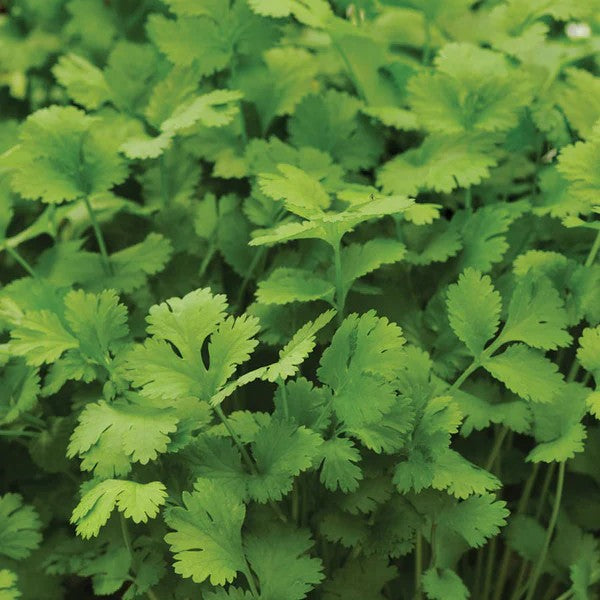Coriander
Coriander
Couldn't load pickup availability
Short Summary for Coriander
Coriander, also known as cilantro, is an aromatic herb commonly used in culinary dishes for its distinct flavor. It's a versatile herb that thrives in cool weather and can be grown in various conditions, whether in gardens or containers. Coriander offers both flavorful leaves and spicy seeds, making it an excellent addition to your herb garden for fresh, homegrown ingredients.
Planting Instructions for Coriander
General Sowing Time: Coriander is best sown in spring or fall when temperatures are between 10°C-20°C for optimal growth.
Position: Choose a location with full sun or partial shade. Coriander prefers well-drained, slightly acidic soil with good fertility for the best growth.
Suitable Space: Plant in garden beds or containers. Ensure there is sufficient space for the plant to grow, as coriander can spread out as it matures.
Sow Depth: Sow seeds 0.5 cm deep in the soil for ideal germination.
Spacing: Space seeds 5-10 cm apart to allow room for plant growth. Thin out seedlings to maintain this spacing as they grow.
Height: Coriander grows to a height of about 30-60 cm, depending on the growing conditions.
Germination: Seeds typically germinate in 7-14 days under favorable conditions.
Days to Bloom: Coriander flowers after about 6-8 weeks, producing small white or pink blooms. After blooming, the plant will begin to set seeds.
Temperature: Coriander grows best in temperatures between 10°C-20°C. Avoid growing it in hot summer conditions as the plant may bolt prematurely.
Watering: Keep the soil evenly moist but well-drained. Avoid overwatering, as it can lead to root rot. Regular, light watering is sufficient.
Fertilizing: Coriander benefits from a light application of organic fertilizer or compost to enrich the soil before planting. Avoid high-nitrogen fertilizers, as they may cause excessive leaf growth without enough flavor.
Pests/Diseases: Coriander may attract pests such as aphids, spider mites, and caterpillars. Use organic pest control methods like neem oil or insecticidal soap. It can also suffer from diseases like downy mildew, which can be minimized by proper spacing and air circulation.
By following these planting instructions, you can enjoy fresh Coriander all season long for your culinary creations.
Share


